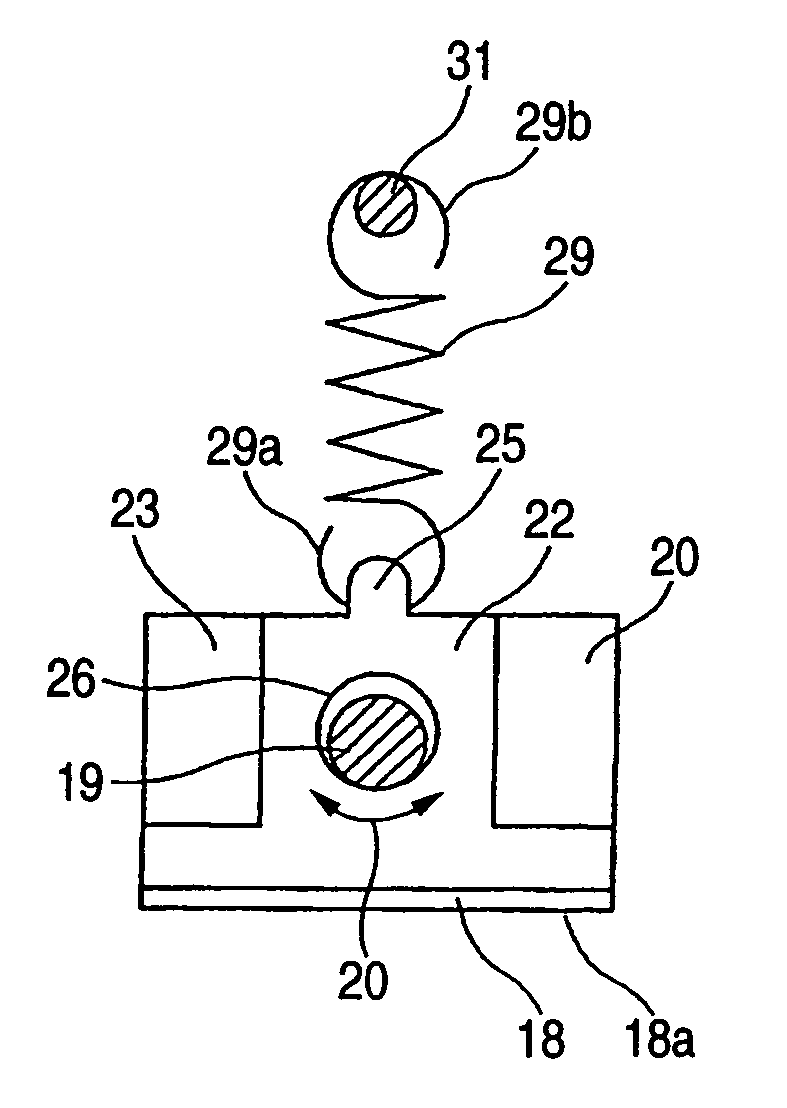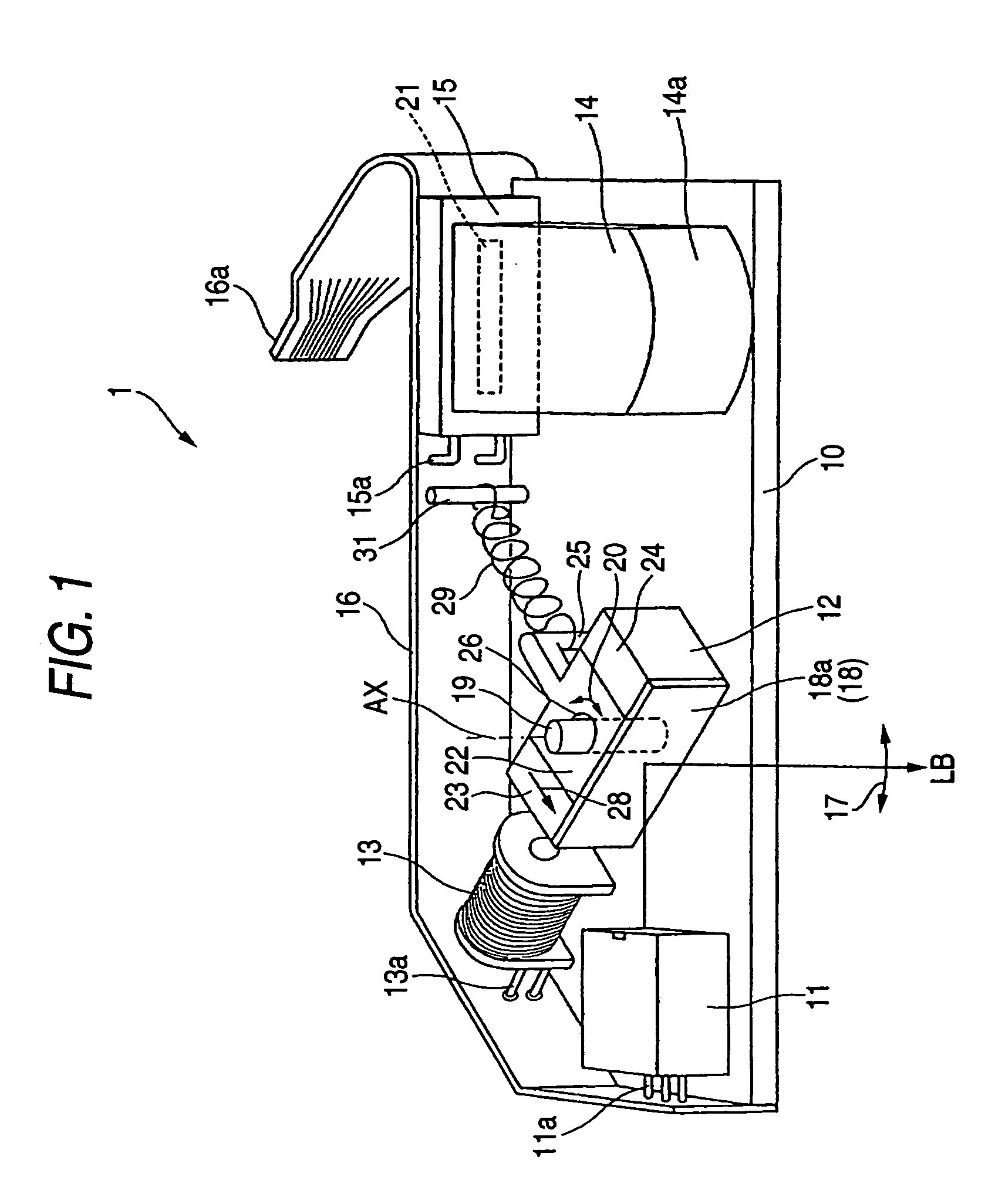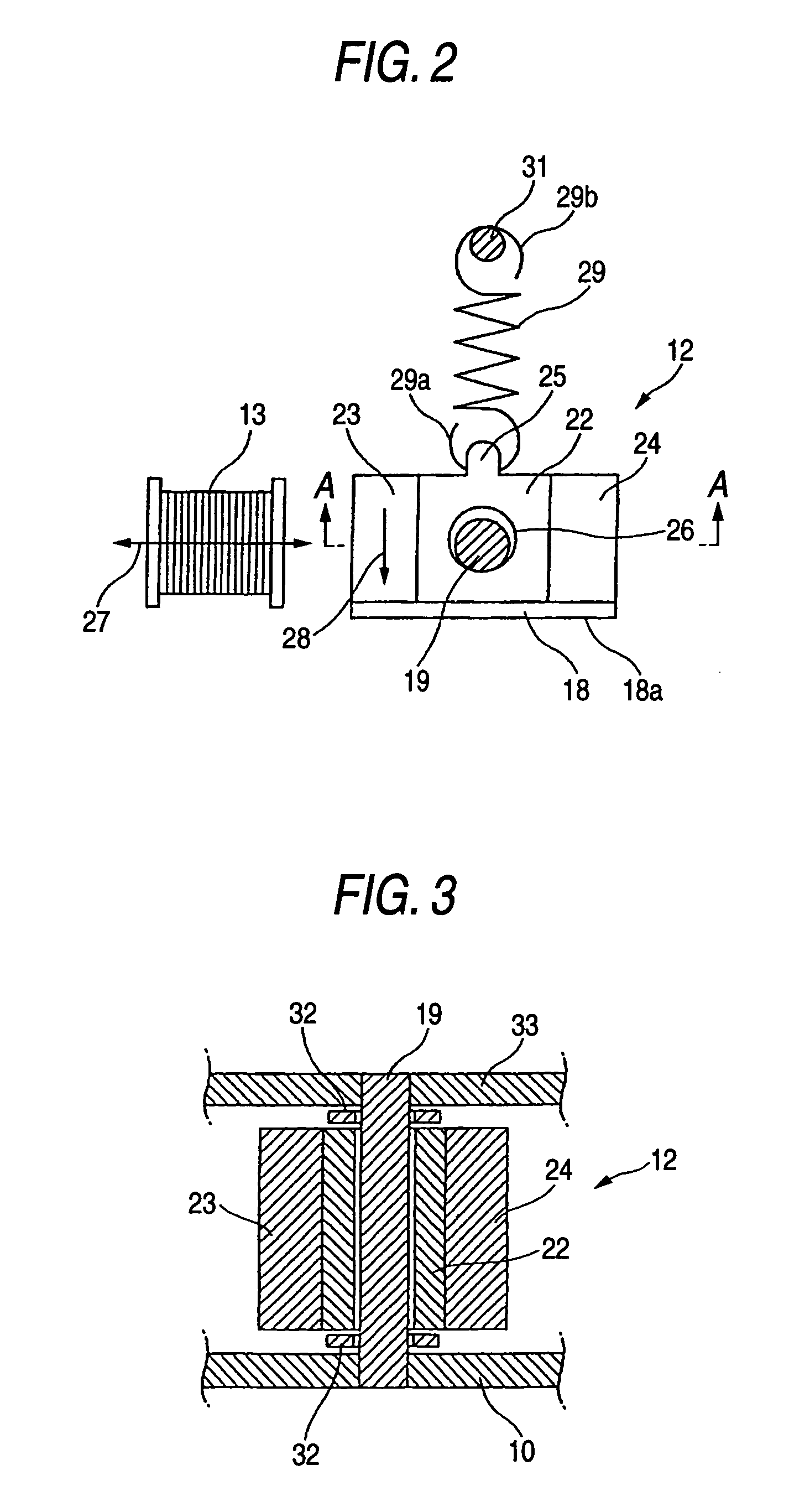Optical unit for optical symbol reader
- Summary
- Abstract
- Description
- Claims
- Application Information
AI Technical Summary
Benefits of technology
Problems solved by technology
Method used
Image
Examples
first embodiment
[0040]FIG. 1 is an appearance view of an optical unit for an optical symbol reader according to the present invention. The optical unit for optical symbol reader (hereinafter simply referred to as optical unit) 1 comprises a light source 11, a rotor 12, an electromagnetic coil 13, a converging lens 14, and a photo detector 15, which are disposed on a base 10.
[0041]Wiring means 16 as a flexible substrate is fixed in part around the periphery of the base 10, in which a leader line 11a for the light source 11, a leader line 13a for the electromagnetic coil 13, and a leader line 15a for the photo detector 15 are connected to the wiring means 16. At an end portion 16a of the wiring means 16, an edge connector is formed to connect with an electronic circuit contained in an optical symbol reader (bar code reader). Accordingly, the light source 11, the electromagnetic coil 13 and the photo detector 15 are connected via the wiring means 16 to the electronic circuit. The electronic circuit co...
second embodiment
[0067]FIGS. 10A and 10B are views showing an optical unit according to the invention. FIG. 10A is a plan view and FIG. 10B is a side view. In the optical unit 1 of this embodiment, the light source 11, the rotor 12, the electromagnetic coil 13, the converging lens 14 and the photo detector 15 are disposed in a saved space on the base 10. The permanent magnet 23 is fixed at one end of the bearing member 22 having the bearing bore 26 of the rotor 12, and the mirror 18 is fixed at the other end. The electromagnetic coil 13 for generating the magnetic field 27 in parallel and opposite to the direction of magnetization 28 of the permanent magnet 23 is provided facing the magnetic pole of the permanent magnet 23. The reflection face 18a of the mirror 18 forms an angle of about 45 degrees with respect to the urging direction of the coil spring 29.
[0068]Namely, the electromagnetic coil 13 and the light source 11 are disposed in a space across the coil spring 29 for resiliently urging the ro...
third embodiment
[0069]FIGS. 11A and 11B are views showing an optical unit according to the invention, in which FIG. 11A is a plan view and FIG. 11B is a side view. The optical unit 1 of this embodiment has a smaller area of the base 10 by taking a two-stage structure for the optical unit 1 of the embodiment of FIGS. 10A and 10B. That is, the light source 11, the rotor 12, and the electromagnetic coil 13 are arranged in a saved space on the front side of the base 10, and the converging lens 14 and the photo detector 15 are arranged on the back side of the base 10.
[0070]Various embodiments of the present invention have been described above together with the variation examples, but the invention may be embodied by combining these embodiments and variation examples. The invention may be embodied in various forms other than these embodiments and variation examples.
[0071]For example, the optical unit of each embodiment employs a non-coaxial light receiving system in which the optical systems for the opti...
PUM
 Login to View More
Login to View More Abstract
Description
Claims
Application Information
 Login to View More
Login to View More - R&D
- Intellectual Property
- Life Sciences
- Materials
- Tech Scout
- Unparalleled Data Quality
- Higher Quality Content
- 60% Fewer Hallucinations
Browse by: Latest US Patents, China's latest patents, Technical Efficacy Thesaurus, Application Domain, Technology Topic, Popular Technical Reports.
© 2025 PatSnap. All rights reserved.Legal|Privacy policy|Modern Slavery Act Transparency Statement|Sitemap|About US| Contact US: help@patsnap.com



